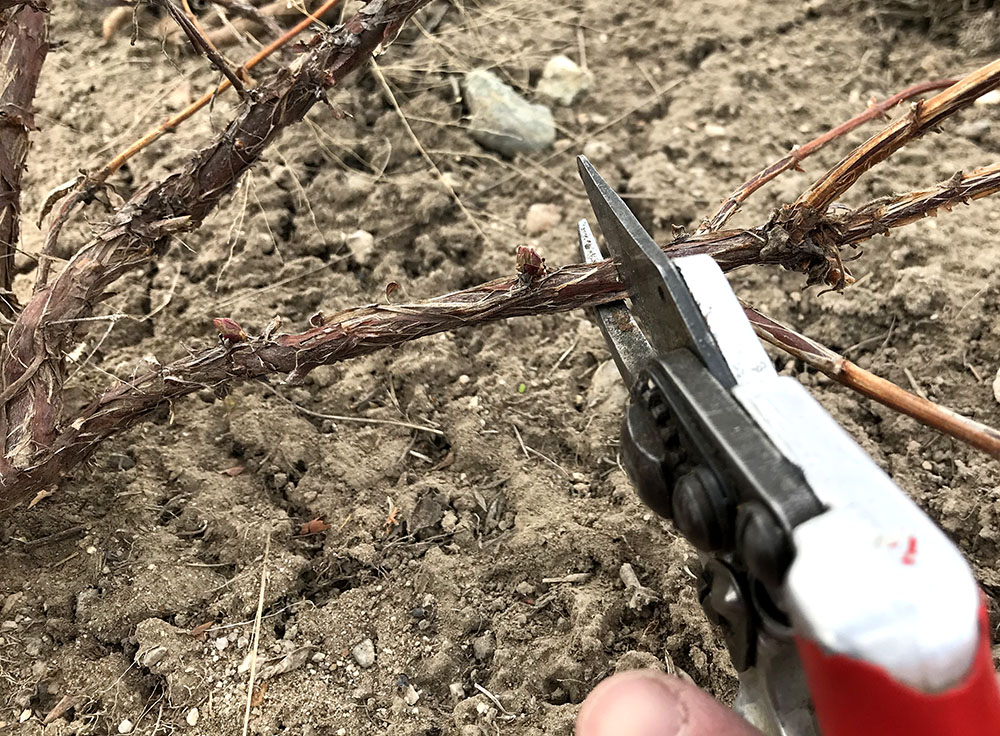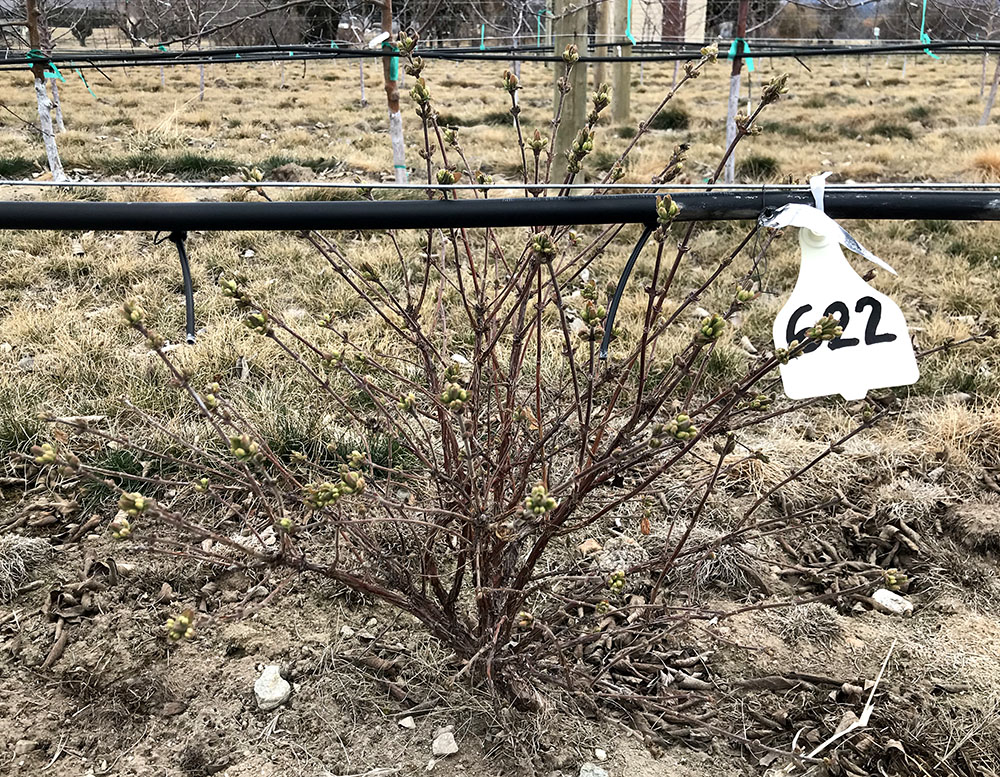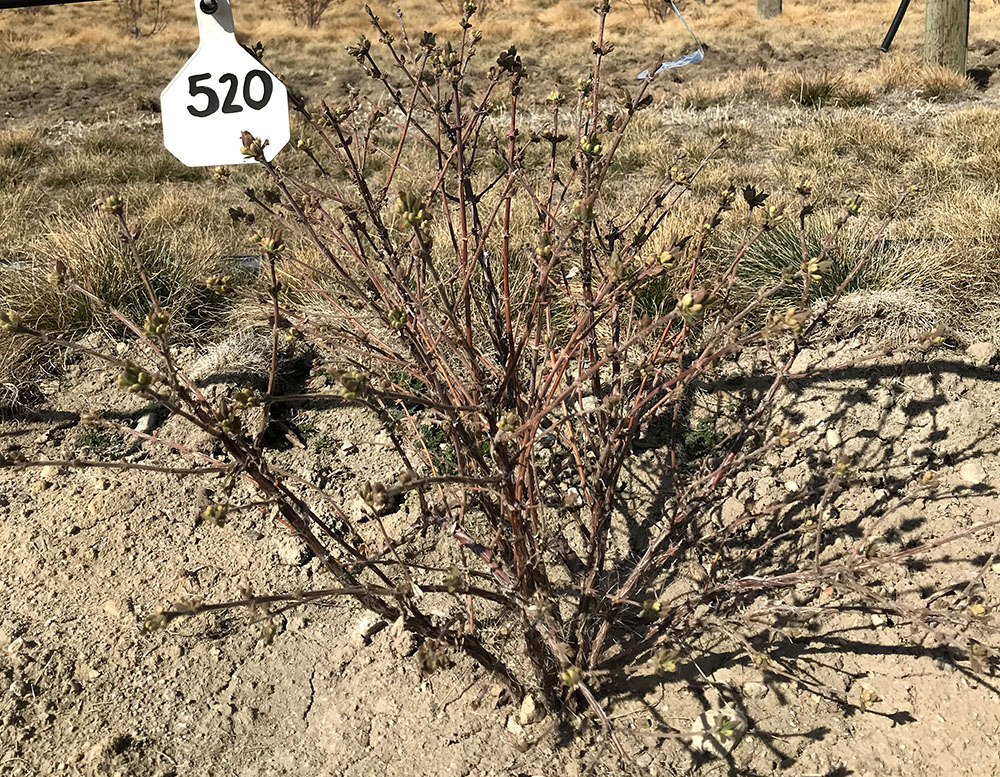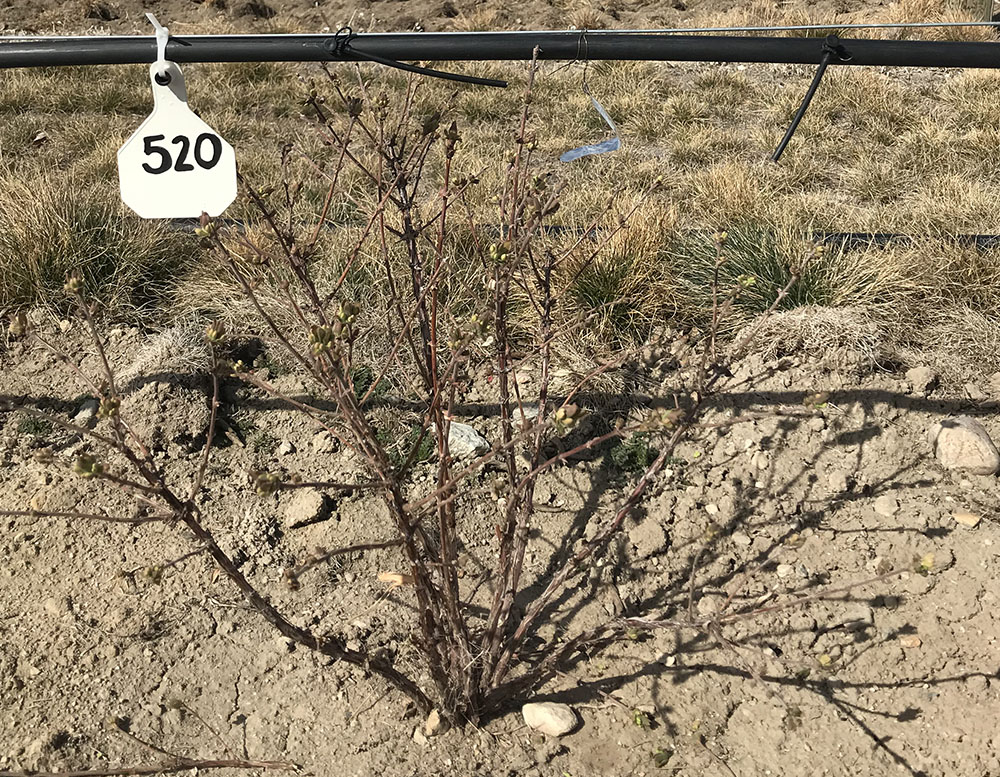'Borealis' Pruning Trial

Placing waxwings around a haskap shrub for fruit collection.
MSU-WARC has been testing and optimizing a haskap mechanical harvest system that can be an efficient and cost-effective method for Montana small-scale commercial haskap growers. Several issues have been noted regarding using the pair of large metal fruit collection bins (waxwings) for catching berries that are shaken from individual shrubs during harvest. The waxwings are placed on the ground close to the trunk on opposites sides of the shrub. Since haskaps have a bushy growth form—with branches generally beginning at the base of the plant and sometimes drooping towards branch tips—lower branches must be lifted either by the person positioning the waxwing or by a second worker. A number of fruit are inadvertantly shaken onto the ground before the waxwing is in place. Low branches also prevent the waxwings from being pushed tightly together, causing a gap in the collection area. And finally, when removing the waxwings from beneath unpruned shrubs, lower branches must again be held up or fruit loss may occur as drooping branches sweep fruit out of the bin onto the ground.

A lower branch is pruned just after an upright bud that will direct future growth upward.
In 2020, WARC began a pruning trial onsite with the 'Borealis' haskap variety. Shrubs were pruned to remove unhealthy or dead branches or to facilitate placement of waxwings. Drooping branches were pruned just after an upright bud to direct future growth upwards. Yield was measured and found to be only slightly lower than for unpruned shrubs. In 2021, researchers will measure plant size and structure in addition to yield.
Before pruning |
After pruning |
 |
 |
 |
 |

